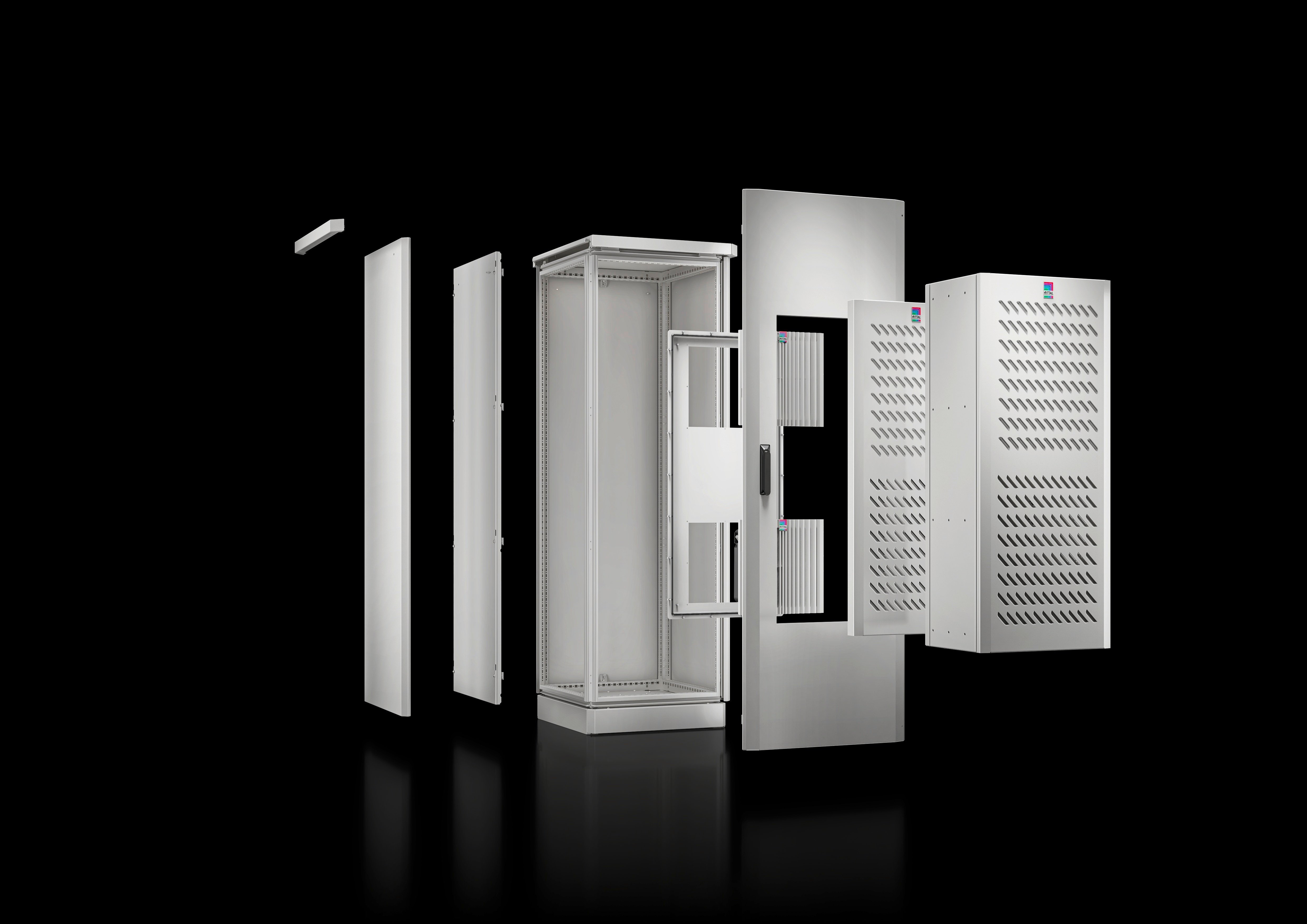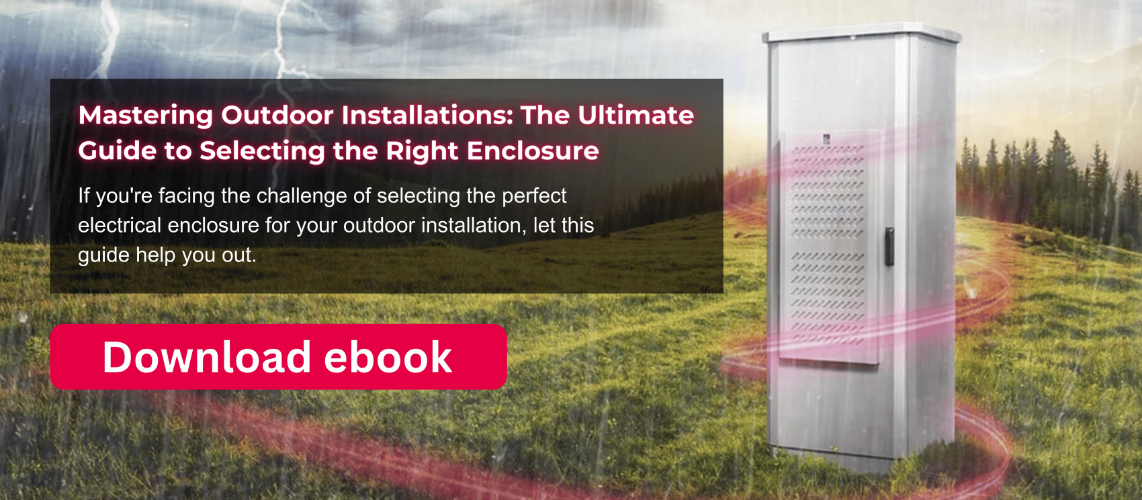
Rittal's Guide to Outdoor Enclosures
With Rittal's outdoor enclosures, material considerations are perhaps more important than ever. Here are some considerations we can help you make when you are tailoring our enclosures to your specific environment and needs.
At first glance, it may seem like the standard IP protection is the only deciding factor on which enclosure to use. While this does factor into your decision, there are many other elements to contemplate such as material used, number of skinning layers, durability, thermal management, and more. Let's explore some of these components.
Superior Protection from the Elements
Rittal understands the corrosive effects that water exposure can have on outdoor enclosures. Our enclosures are designed with multiple protective features to safeguard against rainwater and moisture. All of our enclosures achieve an IP rating 55 which protects against wind, rain, and dust.
Most notably, all of our outdoor enclosures incorporate an overhanging double-skinned roof design. This creates a horizontal seal at the top that guarantees better protection than the standard vertical door seals. Rainwater can clearly run off the roof edge without collecting around the seams, avoiding issues like rusting and corrosion.
The double wall construction of our enclosures creates an additional layer of protection where condensation can form without damaging the inner layer with the control panel. This small air pocket provides an effective thermal barrier against heat transfer as well.
.jpg?width=797&height=448&name=fri240302400%20(1).jpg)
Tampering Security Measures
Restricting unauthorized access is an imperative concern when creating our outdoor enclosures. Outdoor enclosures usually house vital equipment such as railway signalling control panels which would be detrimental to the running of trains at the hands of tampering.
To prevent this, our enclosures undergo rigorous testing and simulations, such as attempted access using common hand tools over an extended period. Our resistance class rating 2 illustrates that our enclosures can withstand a sustained period of attempted vandalism with screwdrivers and hammers; the goal is to allow enough resistance time for the vandal to be deterred, and/or somebody has disturbed them.
Our enclosures also feature a labyrinth effect design, so the panels need to be dismantled in a particular order to access the inside. This is another design idea to deter intruders.
Although you can still use traditional keys with our enclosures, they also support contactless NFC access to allow technicians to access the enclosure quickly and efficiently while ensuring authentication. Customers can feel confident that their assets are well-shielded from tampering risks no matter the location.

Understanding Enclosure Materials
When choosing materials that will face all kinds of outdoor weather conditions, it is important to weigh up the pros and cons of each option. Stainless steel is usually the metal that springs to mind for outdoor enclosures, but is it really the best choice for you?
- Stainless steel provides initial corrosion protection with an extra layer of powder coating paint. However, this can become vulnerable in the long-term. Stainless steel can rust and disintegrate with exposure to salt particles and water.
- When aluminium encounters salt and moisture, it oxidises and creates its own protective barrier on the metal that can self-regenerate, and therefore boasts better longevity.
- The strength-weight ratio of aluminium allows for thinner yet robust sheets which lowers material costs and provides more space inside for cabling. The lighter weight also saves resources on handling and transportation.
- Aluminium has a higher IK rating than stainless steel and can better withstand impact. Stainless steel tends to crack whereas aluminium will bend.
- However, in a coastal environment, 316L Marine grade stainless steel would be more suitable than aluminium. The higher molybdenum percentage in the composition prevents salt water from corroding the metal.
It is no surprise by looking at the benefits of aluminium that it is our first port of call for outdoor enclosures. In the majority of applications, aluminium is cheaper, stronger, and lasts longer; what’s not to love? However, it is not a ‘one size fits all’ situation. At Rittal, we review each and every one of your tailored requirements which will inform the material we use.
Climate Control
Direct sunlight can prove a challenge; our panels absorb over 500W of heat which must then be dispelled. Rittal’s double-wall design helps combat this, as the warm air can escape through the roof’s overhang without affecting the inner enclosure to avoid the overheating of electrical components.
Additional steps include louvred grills throughout the enclosure which allows heat to escape and enhance airflow.
Rittal’s Blue E+ unit connects to the enclosure for exceptional climate regulation, down to 0.01 of a degree. The temperature can only be modified from the inside of the enclosure so only authorised personnel can adjust it.

Conclusion
Overall, choosing the right enclosure for you involves analysing multiple factors. Rittal designs enclosures with the best protection from environmental stresses, tampering and climate control.
Additionally, consider the implications of which material you need, as this decision often goes overlooked. Every solution with Rittal is tailored to your specific situation, so discuss your next project with us today!
If you're still unsure which choice is the best for you, read our eBook, 'Mastering Outdoor Installations: The Ultimate Guide to Selecting the Right Enclosure'.



